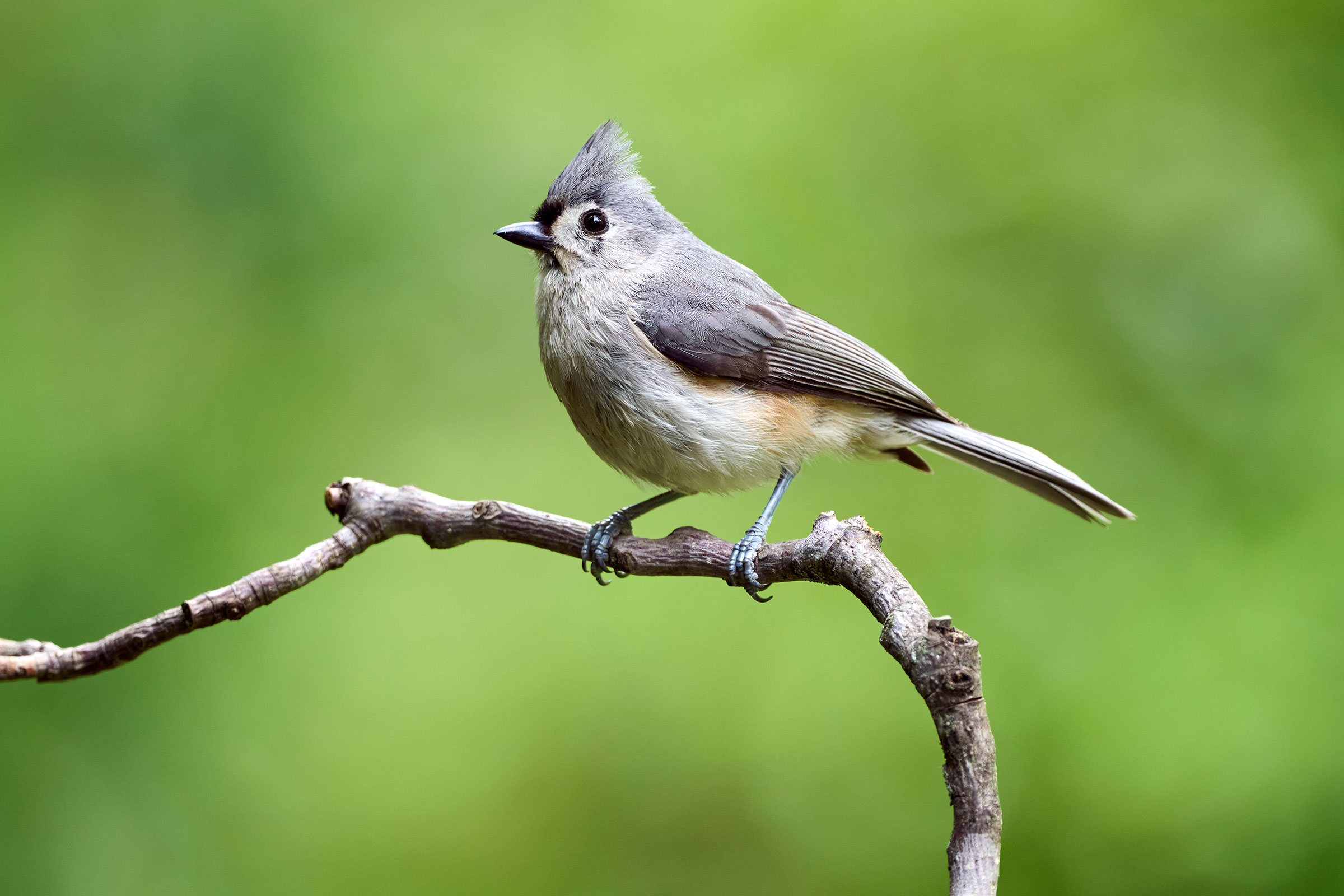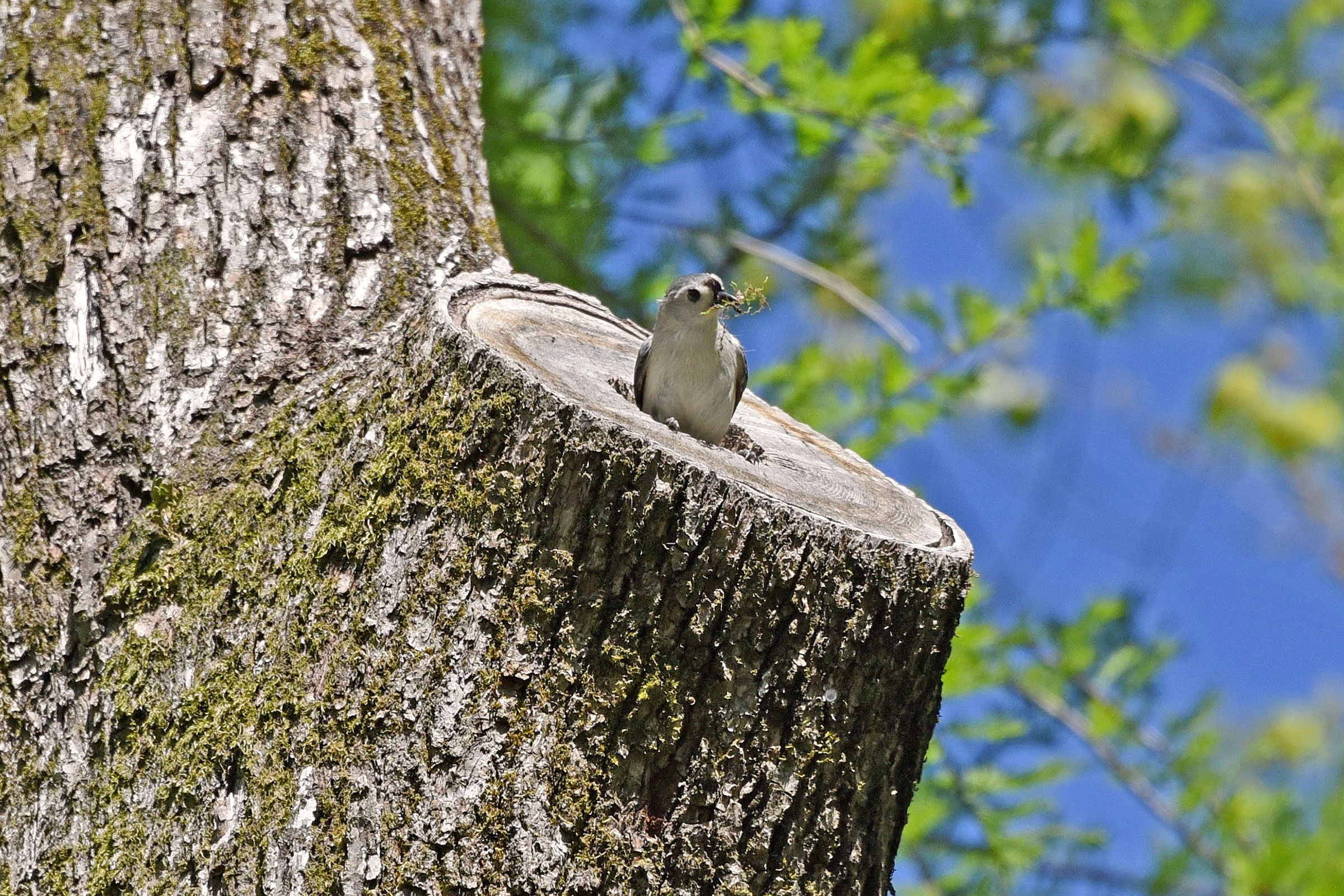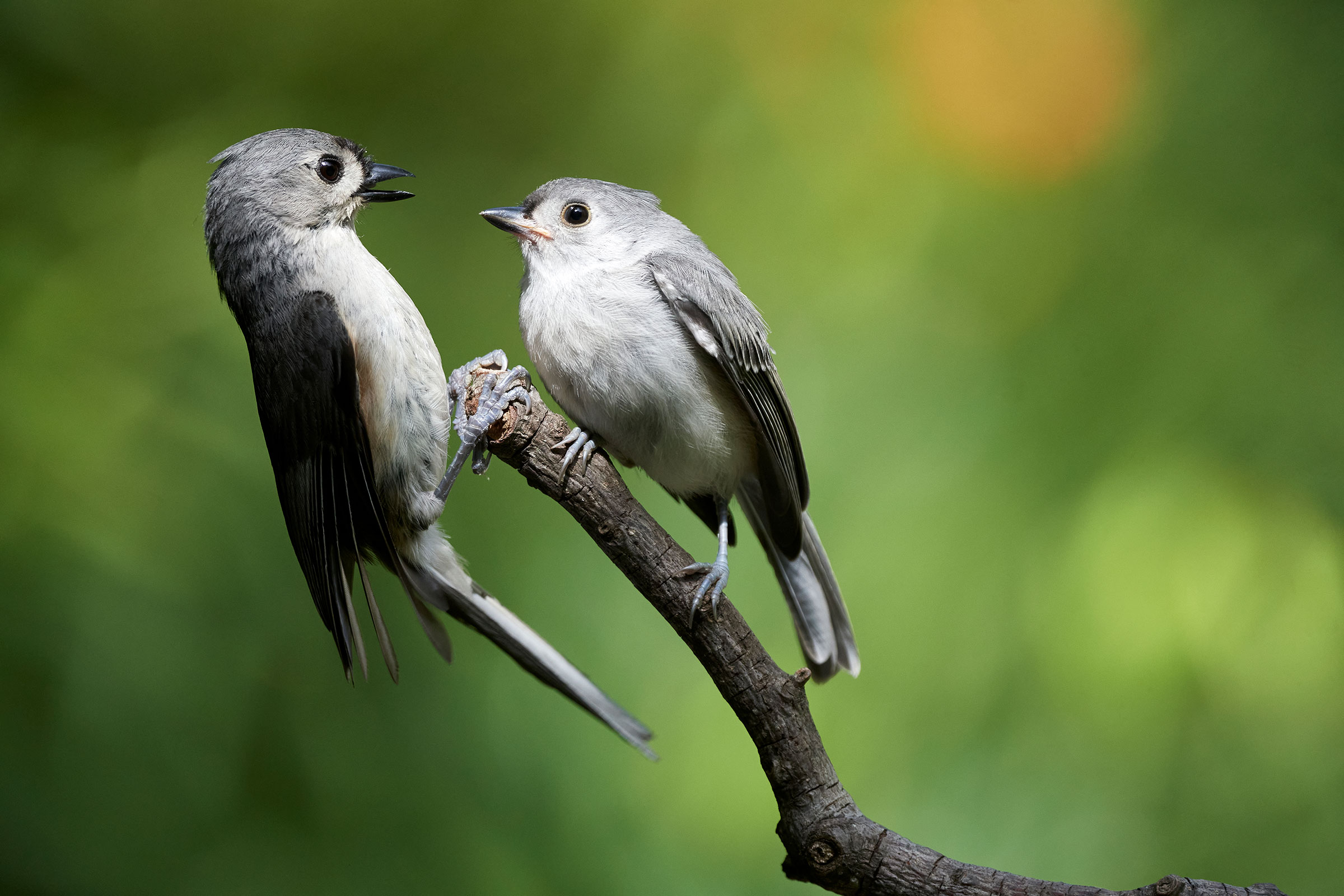Introduction
The Tufted Titmouse is a slate-gray feeder bird with a handsome head crest and black eyes. Virginia holds the distinction for being home to the oldest known wild Tufted Titmouse. The bird was banded in Virginia in April 1962 and found again in Virginia in September 1974, making it 12 years old (Clapp et al. 1983; Ritchison et al. 2020). This species can be found throughout the state in a variety of habitats, ranging from mixed, deciduous forests and pine forests to more open habitats to urban/suburban areas, but they nest in tree cavities that have already been excavated by other species such as woodpeckers (Wilson 2014; Hahn and Emerick 2018; Ritchison et al. 2020).
Breeding Distribution
Due to model limitations during the First and Second Atlases, Tufted Titmouse’s distribution could not be modeled (see Interpreting Species Accounts). For information on where Tufted Titmouse occurs in Virginia, please see the Breeding Evidence section.
Breeding Evidence
The Tufted Titmouse was a confirmed breeder in 803 blocks and 118 counties and a probable breeder in an additional nine counties (Figure 1). Similarly, breeding observations were observed throughout the state during the First Atlas (Figure 2).
An adult Tufted Titmouse was seen carrying nesting material as early as February; however, most breeding behaviors were recorded starting in March (Figure 3). Breeding was primarily confirmed through observations of recently fledged young (March 8 – August 24), adults carrying food (March 27 – August 16), and adults feeding young (April 18 – August 27).
For more general information on the breeding habits of this species, please refer to All About Birds.
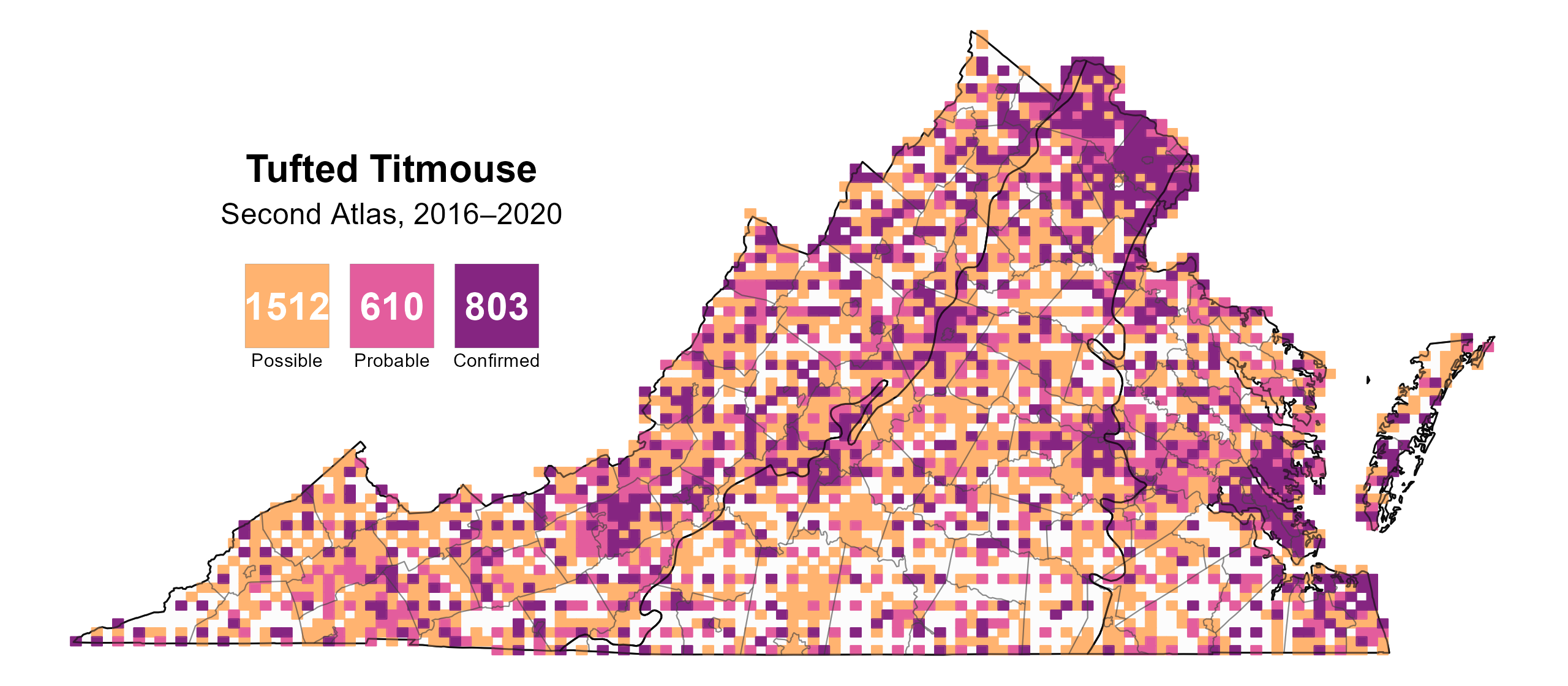
Figure 1: Tufted Titmouse breeding observations from the Second Atlas (2016–2020). The colored boxes illustrate Atlas blocks (approximately 10 mi2 [26 km2] survey units) where the species was detected. The colors show the highest breeding category recorded in a block. The numbers within the colors in the legend correspond to the number of blocks with that breeding evidence category.

Figure 2: Tufted Titmouse breeding observations from the First Atlas (1985–1989). The colored boxes illustrate Atlas blocks (approximately 10 mi2 [26 km2] survey units) where the species was detected. The colors show the highest breeding category recorded in a block. The numbers within the colors in the legend correspond to the number of blocks with that breeding evidence category.
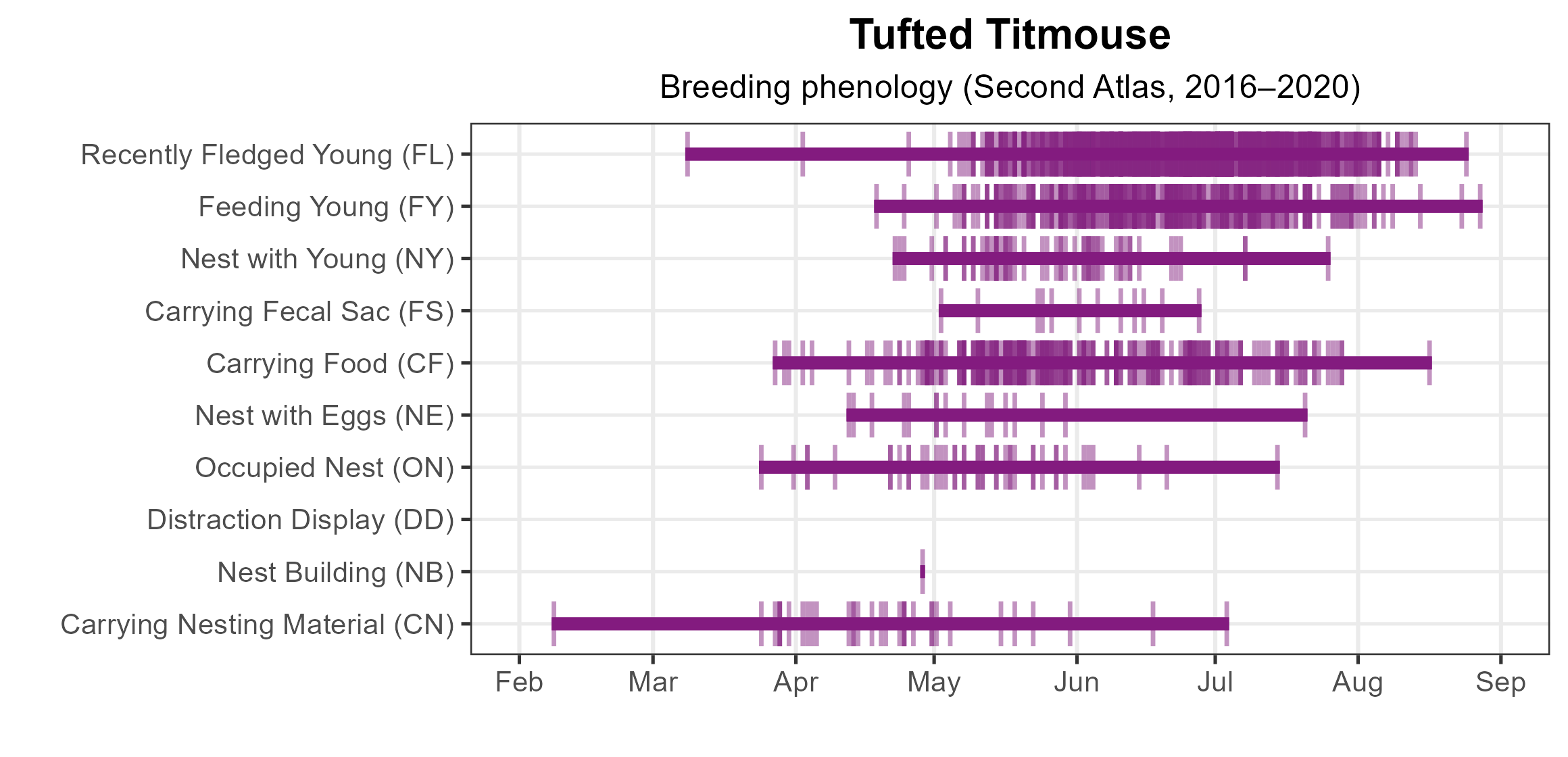
Figure 3: Tufted Titmouse phenology: confirmed breeding codes. This graph shows a timeline of confirmed breeding behaviors. Tick marks represent individual observations of the behavior.
Population Status
Tufted Titmouse relative abundance was predicted to be highest in the Coastal Plain and Piedmont regions, except in the highly developed areas of Hampton Roads-Virginia Beach, Northern Virginia, and Richmond and regions with intensive agriculture (Figure 3). Abundance was moderate in forested areas of the Mountains and Valleys region and lower in the valleys in the central portion of the region.
The total estimated Tufted Titmouse population in the state is approximately 1,866,000 individuals (with a range between 1,526,000 and 2,282,000, making it the fifth most abundant bird in the state (among those species for which abundance could be modeled). Based on the North American Breeding Bird Survey (BBS), the Tufted Titmouse population increased by a significant 0.71% annually from 1966–2022 in Virginia, and between Atlases, its population experienced a significant increase of 1.7% per year from 1987–2018 (Hostetler et al. 2023; Figure 5).

Figure 4: Tufted Titmouse relative abundance (Second Atlas, 2016–2020). This map indicates the predicted abundance of this species at a 0.4 mi2 (1 km2) scale based on environmental (including habitat) factors. Abundance values are presented on a relative scale of low to high.
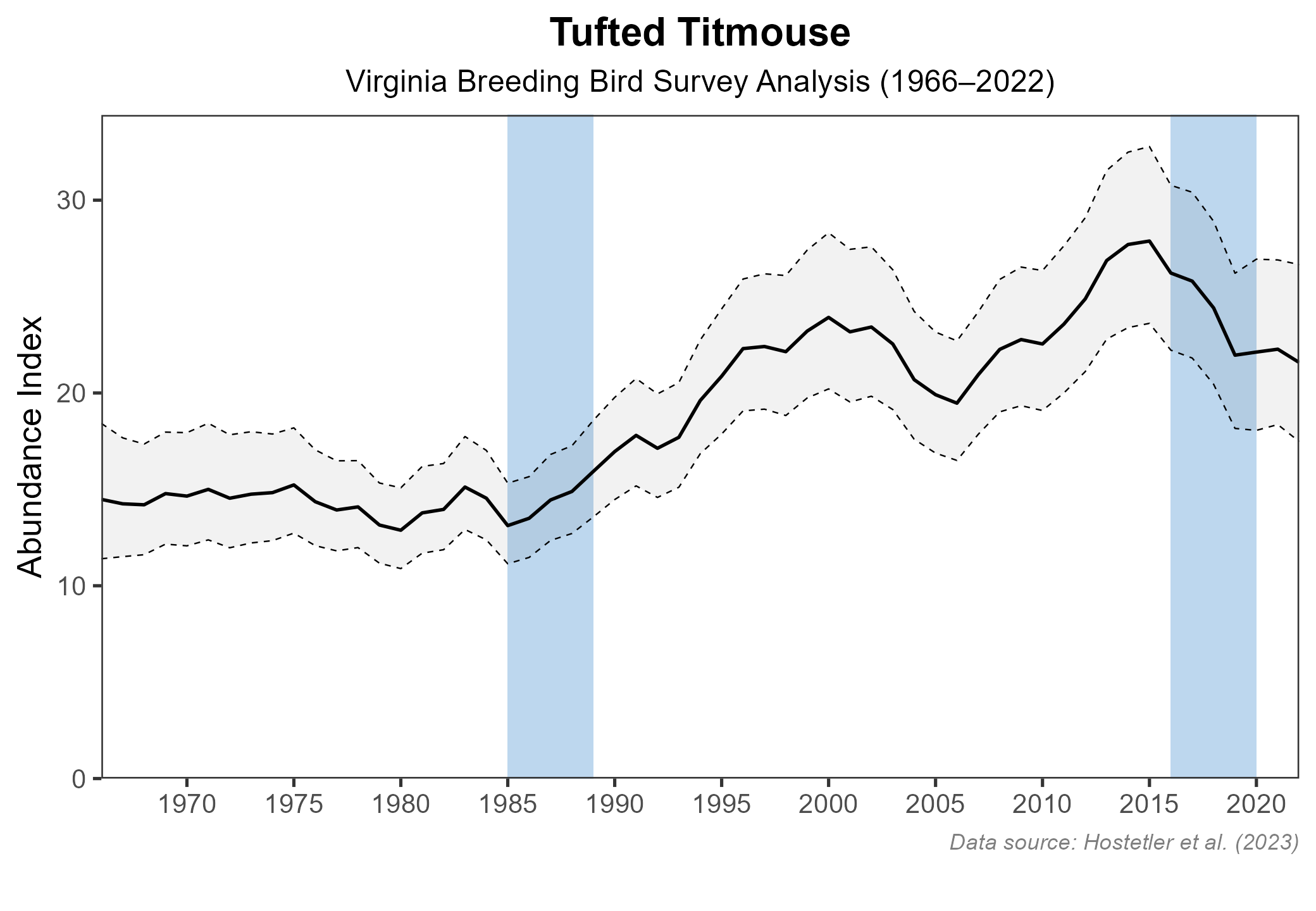
Figure 5: Tufted Titmouse population trend for Virginia as estimated by the North American Breeding Bird Survey. The vertical axis shows species abundance; the horizontal axis shows the year. The solid line indicates the estimated population trend; there is a 97.5% probability that the true population trend falls between the dashed lines. The shaded bars indicate the First and Second Atlas periods.
Conservation
The Tufted Titmouse is common and widespread throughout Virginia and its range (Ritchison et al. 2020). It is not considered a species of special concern, and no specific conservation projects are underway in Virginia.
Interactive Map
The interactive map contains up to six Atlas layers (probability of occurrence for the First and Second Atlases, change in probability of occurrence between Atlases, breeding evidence for the First and Second Atlases, and abundance for the Second Atlas) that can be viewed one at a time. To view an Atlas map layer, mouse over the layer box in the upper left. County lines and physiographic regional boundaries (Mountains and Valleys, Piedmont, and Coastal Plain) can be turned on and off by checking or unchecking the box below the layer box. Within the map window, users can hover on a block to see its value for each layer and pan and zoom to see roads, towns, and other features of interest that are visible beneath a selected layer.
View Interactive Map in Full Screen
References
Clapp, R. B., M. K. Klimkiewicz, and A. G. Futcher (1983). Longevity records of North American birds: Columbidae through Paridae. Journal of Field Ornithology 54:123–137.
Hahn, M. and V. Emrick (2018). Species occurrence and breeding behavior of birds on the Hahn Farm Montgomery County, Virginia. VTCMI-Technical Report-02-2018. Conservation Management Institute, College of Natural Resources and Environment, Virginia Polytechnic Institute and State University, Blacksburg, VA, USA.
Hostetler, J. A., J. R. Sauer, J. E. Hines, D. Ziolkowski, and M. Lutmerding (2023). The North American breeding bird survey, analysis results 1966–2022. U.S. Geological Survey, Laurel, MD, USA. https://doi.org/10.5066/P9SC7T11.
Ritchison, G., T. C. Grubb Jr., and V. V. Pravosudov (2020). Tufted Titmouse (Baeolophus bicolor), version 1.0. In Birds of the World (P. G. Rodewald, Editor). Cornell Lab of Ornithology, Ithaca, NY, USA. https://doi.org/10.2173/bow.tuftit.01.
Wilson, M. D. (2014). Avian survey of Fort Lee, Virginia 2014. Center for Conservation Biology Technical Report Series, CCBTR-14-14. College of William and Mary and Virginia Commonwealth University. Williamsburg, VA, USA.

